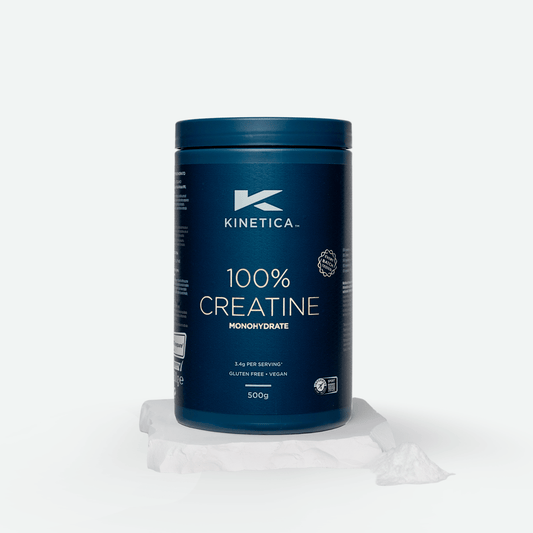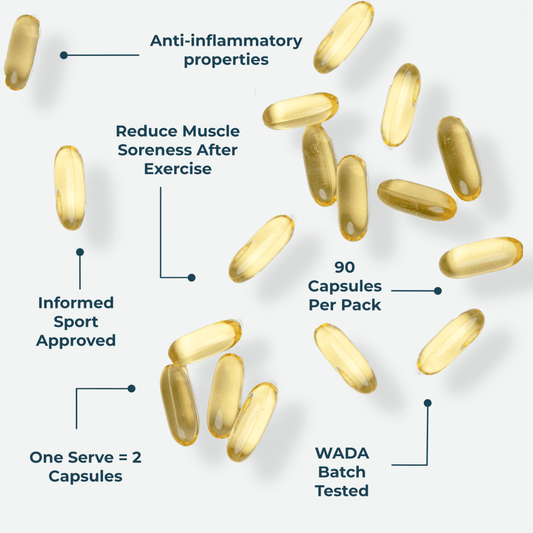Customizing Your Diet for Personal Health Goals

Introduction
In the pursuit of better health, the idea of customising your diet has gained significant traction. But what does it really mean to customise your diet to your personal needs?
Often, people believe that improving their diet requires a detailed, rigid meal plan, outlining exactly what to eat and avoid. However, when they inevitably fall short of sticking to this plan, it leads to feelings of failure and frustration. The reality is that expecting complete adherence to a strict plan is both unrealistic and unsustainable.
Nutrition isn't a one-size-fits-all solution; it's a spectrum that varies from person to person and even for the same person over time. Our bodies are dynamic, and so are our nutrition requirements. Factors such as daily activity levels, stress, sleep, and overall health can influence what and how much we need to eat. High quality supplements on top of a quality diet, like Kinetica Whey Protein, Vitamin D Spay, and Omega-3 can all play a supportive role in meeting your nutrition needs.

Approaching our nutrition needs with a flexible and adapting mindset rather than strict or rigid is helpful as it recognizes that our dietary needs can fluctuate due to various reasons:
- Daily Variability: Some days you might be more active, requiring more calories and carbohydrates, while on less active days, your needs might be lower.
- Life Changes: Major life events such as pregnancy, illness, or injury can significantly alter your nutrition requirements.
- Seasonal Adjustments: Changes in weather and seasonal availability of foods can affect your diet. For instance, you might crave lighter, hydrating foods in the summer such as salads and smoothies and more hearty, warming foods in the winter such as curries & stews.
We also must recognise that sometimes we have more time and motivation to focus on our nutrition, while other times, life's demands take priority. This doesn't mean we should neglect our nutrition in those busier periods, but rather adjust our expectations and strategies. Holding ourselves to the same standards during busy periods as we do when we have more time can lead to disappointment and frustration.
What are you working towards?
The first step in customising your diet is to clearly define what you’re working towards. Are you aiming to lose fat, build muscle, enhance your performance, or simply improve overall health? Each goal will require a different approach to nutrition.
For instance, a fat loss goal might focus on creating a calorie deficit through balanced meals that keep you satiated, while muscle gain would require an increase in protein intake and possibly a calorie surplus. Focusing on improving performance often involves a closer look at nutrient timing and carbohydrate demands, whereas general health improvements might focus on incorporating a variety of nutrient-dense foods to support overall well-being.
Where are you now?
Before making any changes, it's essential to understand your starting point. This involves evaluating your current eating habits, nutrient intake, and lifestyle factors. Keeping a reflective food diary for a week can provide valuable insights into your eating patterns and nutrition intake. It can be helpful when keeping a food diary to also include a short note on the time, where you were and how you were feeling before and after the meal. This can provide a greater awareness of your food decisions and their impact, whether positive, negative or neutral.
Consider Unique Factors
Every individual is unique, and so are their nutrition needs. Factors such as age, gender, activity level, and health conditions all play a role in determining the best diet for you.
For example:
- Age and Gender: Nutrition needs can vary significantly at different life stages and between genders. Adolescents might require more calories and nutrients to support growth, especially highly active adolescents while older adults may need more calcium and vitamin D for bone health. Kinetica Vitamin D supplements can help meet these increased needs.
- Activity Level: An athlete or highly active individual will have different energy and nutrient requirements compared to someone with a sedentary lifestyle. Tailoring your diet to match your activity level ensures you have the energy to perform and recover effectively.
- Health Conditions: Specific health conditions, such as diabetes, hypertension, or food allergies, necessitate tailored dietary approaches. For example, managing blood sugar levels is crucial for diabetics, while those with hypertension might focus on reducing sodium intake.

Balanced Plate Method
The balanced plate method is a simple and visual approach to creating well-rounded meals. It ensures that you get a variety of nutrients without having to count calories or macronutrients.
Start by including:
- Half Your Plate with Vegetables: Aim for a variety of colours and types to maximise nutrient intake.
- A Quarter with Protein: Include lean proteins such as chicken, fish, beans, or tofu.
- A Quarter with Whole Grains: Choose whole grains like brown rice, quinoa, or whole-wheat pasta. White rice, pasta and potatoes are all perfect to include in your diet, wholegrains just provide some additional fibre to support our digestive health.
- Add Healthy Fats: Include sources of healthy fats such as olive oil, nuts, or avocados.
For athletes or active individuals, the balanced plate method can be adapted to meet increased energy and nutrient demands by increasing the portion of carbohydrates on training days or fueling days, aiming for half your plate coming from carbohydrates in each meal.
Make your nutrition choices easier by planning ahead
Meal planning doesn’t have to be rigid. Flexibility in meal planning allows you to adapt to changes in your schedule or preferences while still maintaining a balanced diet.
- Batch Cooking: Prepare larger quantities of meals and portion them out for the week. This saves time and ensures you have healthy options available at hand. Add some of these meals to the freezer for ‘emergency meals’.
- Mix and Match: Prepare staple ingredients that can be mixed and matched to create different meals. For example, grilled chicken flavoured with cajun spice, roasted vegetables, and quinoa can be combined in various ways.
- Allow for Spontaneity: Leave room in your planning for spontaneous meals or cravings. This prevents feelings of restriction and helps you enjoy your food more.
Listening to Your Body
Your body will give you signals when adjustments are needed. Listening to these cues can help you stay in tune with your individual needs. Here are some things to look monitor:
- Energy Levels: If you’re feeling constantly fatigued, consider if you’re getting enough calories, especially from carbohydrates and healthy fats. It’s also important to consider the balance of your meals, ensuring they contain a combination of each of the key nutrients.
- Mood and Mental Clarity: Mood swings or difficulty concentrating can be signs that your diet needs adjustments.
- Digestive Health: Pay attention to your digestion. Issues like bloating, constipation, or diarrhea can indicate that your diet might need more fibre, probiotics, or hydration.

Learn more: Electrolyte Tablets
Summary
Customising your diet to your personal health goals involves understanding your individual needs, an understanding of the science behind nutrition, adopting flexible eating strategies, and adapting to life's changing demands. By setting clear goals, assessing your baseline, and considering unique factors, you can create a sustainable and effective nutrition plan for yourself. Embrace flexible strategies like the balanced plate method and plan your meals with adaptability in mind. Stay attuned to your body's signals and adjust your diet to meet your evolving needs.
Nutrition is something we must attend to every day, and it requires regular attention. While it shouldn't consume all our time, paying attention and creating systems and strategies for different life scenarios ensures we are prepared to navigate any situation. By doing so, we can maintain a balanced, healthy diet that supports our overall well-being and helps us achieve our personal health goals.
Key Actions for Customising Your Diet
1. Define Your Goals
- Clearly identify what you are working towards: fat loss, muscle gain, performance enhancement, or general health.
- Keep a reflective food diary for at least a week, noting what you eat, the time, location, and your feelings before and after meals.
3. Consider Unique Factors
- Tailor your diet based on age, gender, activity level, and health conditions.
- Fill half your plate with vegetables, a quarter with lean proteins, and a quarter with whole grains. Include healthy fats such as olive oil, nuts, or avocados.
- Adjust portions for activity levels, increasing carbohydrates on training days.
- Engage in batch cooking and mix and match staple ingredients to create diverse meals.
- Allow for spontaneity in your meal planning to avoid feeling restricted.
- Focus on simple, nutrient-dense foods during busy periods.
- Prepare a travel food pack for healthier options on the go.
- Adjust your nutrition according to your training phases and special events.
- Monitor energy levels and ensure you’re consuming enough calories and nutrients.
- Pay attention to mood and mental clarity to gauge dietary effectiveness.
- Assess digestive health regularly and make adjustments as needed.


















